From the Trenches
Medieval Baby Bootie
By BENJAMIN LEONARD
Monday, June 10, 2019
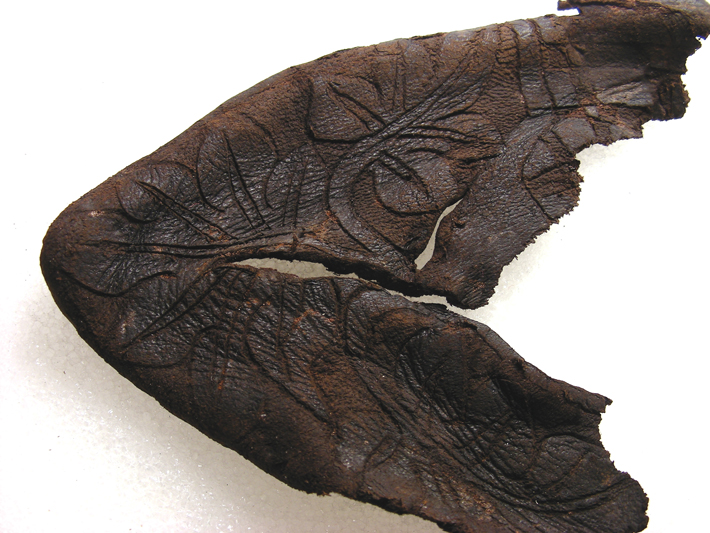 A leather fragment of a late fourteenth-century child’s shoe was recovered during rescue excavations beneath the cobbled streets of Saint-Ursanne, Switzerland. Preserved in waterlogged soil, the ankle boot likely belonged to a child of about one year old, and would have been fastened with leather button clasps. Although the shoe’s style was common for the period, says Marquita Volken of the Lausanne Shoe Museum, its decorative technique is very rare. The intricate geometric and foliage patterns were created by scraping away the leather grain to form a suedelike surface, rather than punching or stamping the designs, as was usual. “Such a pretty little shoe for a baby probably meant the same as it would today,” says Volken. “We want our children to look cute— even if the shoes aren’t needed for walking.”
A leather fragment of a late fourteenth-century child’s shoe was recovered during rescue excavations beneath the cobbled streets of Saint-Ursanne, Switzerland. Preserved in waterlogged soil, the ankle boot likely belonged to a child of about one year old, and would have been fastened with leather button clasps. Although the shoe’s style was common for the period, says Marquita Volken of the Lausanne Shoe Museum, its decorative technique is very rare. The intricate geometric and foliage patterns were created by scraping away the leather grain to form a suedelike surface, rather than punching or stamping the designs, as was usual. “Such a pretty little shoe for a baby probably meant the same as it would today,” says Volken. “We want our children to look cute— even if the shoes aren’t needed for walking.”
Putting Dinner on the Table
By BENJAMIN LEONARD
Monday, June 10, 2019
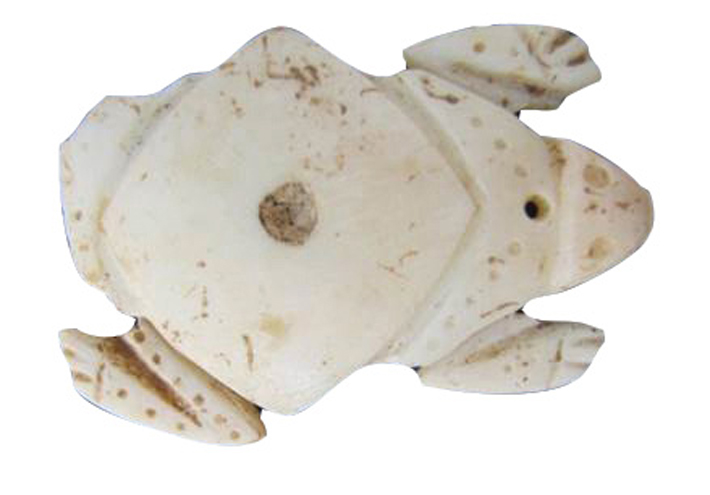
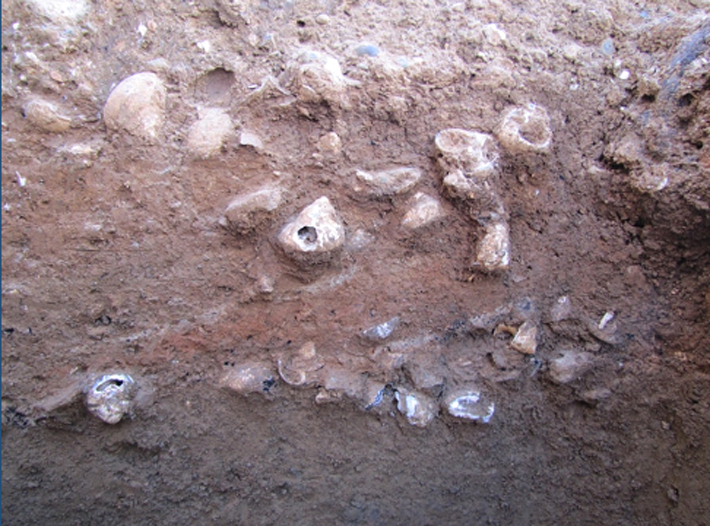 Around A.D. 400, archaeologists believe, children from the indigenous Caribbean Saladoid culture on the island of St. Thomas helped their mothers put food on the table by foraging. The researchers have found that a midden in downtown Charlotte Amalie contains thousands of mollusk shells, the majority of which are smaller snails that adults wouldn’t have bothered to collect because of their low meat yield. Rather, these smaller animals were gathered by Saladoid children, who scoured shallow areas along the shore. “Children made it possible to exploit a wider area more efficiently,” says archaeologist William Keegan of the Florida Museum of Natural History. They could fill a whole basket with small whelks, he explains, and still easily carry it back to their village.
Around A.D. 400, archaeologists believe, children from the indigenous Caribbean Saladoid culture on the island of St. Thomas helped their mothers put food on the table by foraging. The researchers have found that a midden in downtown Charlotte Amalie contains thousands of mollusk shells, the majority of which are smaller snails that adults wouldn’t have bothered to collect because of their low meat yield. Rather, these smaller animals were gathered by Saladoid children, who scoured shallow areas along the shore. “Children made it possible to exploit a wider area more efficiently,” says archaeologist William Keegan of the Florida Museum of Natural History. They could fill a whole basket with small whelks, he explains, and still easily carry it back to their village.
Such aid was necessary because Saladoid communities were matrilocal, so men lived primarily in their mothers’ villages rather than with their wives and children. This made women responsible for providing most of the food for their families, says Keegan. They would supplement produce from their gardens with shellfish, collected in part by the helping hands of their children.
Picnic for the Afterlife
By JARRETT A. LOBELL
Monday, June 10, 2019
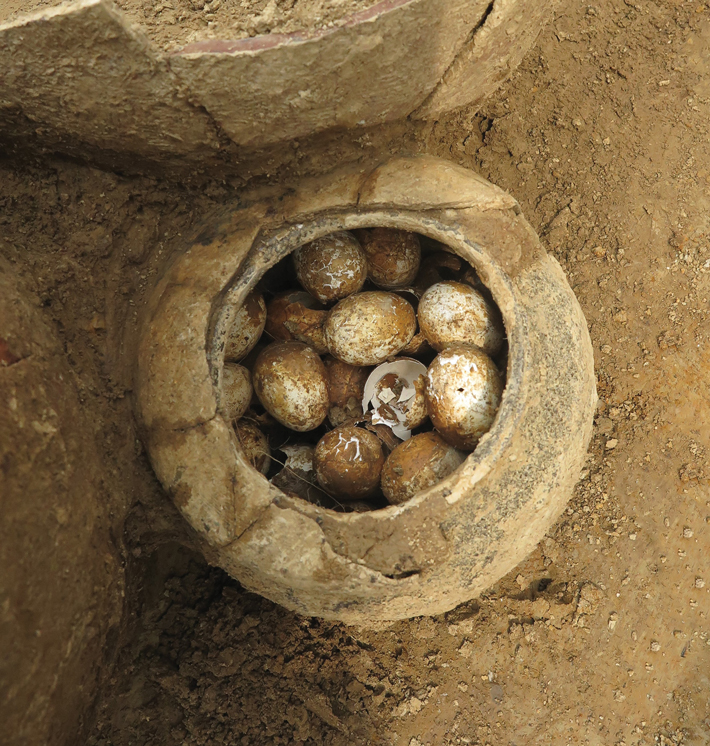 You might have seen a delicacy known as “century eggs” on Chinese restaurant menus or on the shelves of Asian markets and wondered, “Are those eggs really 100 years old?” (Answer: They aren’t. It actually only takes about a month to make them, using a pickling liquid made from lye, salt, and water, and then rolling the eggs in mud and wrapping them in rice husks.) In a recently excavated tomb in eastern China’s Jiangsu province, however, archaeologists found a jar filled with eggs dating all the way back to the Spring and Autumn Period (770–ca. 475 B.C.), making these incredible edibles at least 2,500 years old. Sadly, only the shells remain.
You might have seen a delicacy known as “century eggs” on Chinese restaurant menus or on the shelves of Asian markets and wondered, “Are those eggs really 100 years old?” (Answer: They aren’t. It actually only takes about a month to make them, using a pickling liquid made from lye, salt, and water, and then rolling the eggs in mud and wrapping them in rice husks.) In a recently excavated tomb in eastern China’s Jiangsu province, however, archaeologists found a jar filled with eggs dating all the way back to the Spring and Autumn Period (770–ca. 475 B.C.), making these incredible edibles at least 2,500 years old. Sadly, only the shells remain.
A Big Production
By MARLEY BROWN
Monday, June 10, 2019
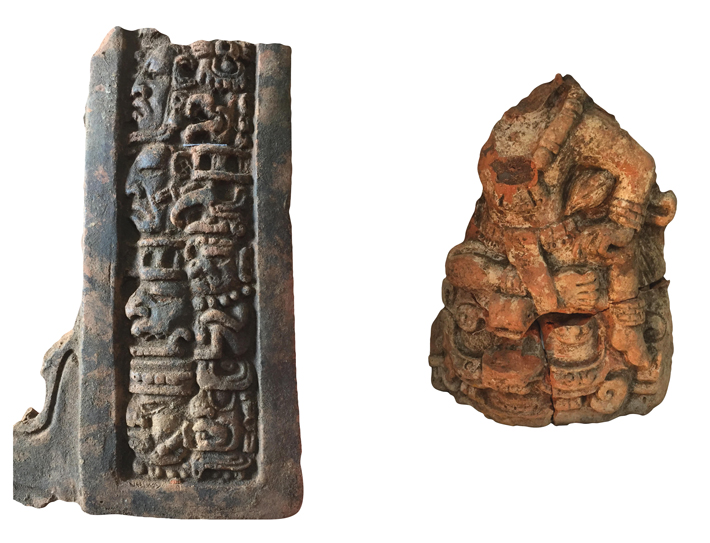 When contractor Pedro Archila drove his excavator into a large earthen mound outside the central Guatemalan city of Coban in May 2018, he inadvertently exposed the remains of the largest figurine workshop ever discovered in the Maya world. A team led by archaeologist Brent Woodfill of Winthrop University and Erin Sears of the Smithsonian Institution subsequently excavated the site, called Aragon, and are now analyzing its more than 400 fragments of figurines and figurine molds.
When contractor Pedro Archila drove his excavator into a large earthen mound outside the central Guatemalan city of Coban in May 2018, he inadvertently exposed the remains of the largest figurine workshop ever discovered in the Maya world. A team led by archaeologist Brent Woodfill of Winthrop University and Erin Sears of the Smithsonian Institution subsequently excavated the site, called Aragon, and are now analyzing its more than 400 fragments of figurines and figurine molds.
The workshop appears to have been active between A.D. 750 and 900, suggesting that a community of artists thrived in the area even as nearby cities, including Cancuen some 50 miles to the north, declined or were destroyed during a period of turmoil. The figurines were likely used as diplomatic gifts and trade items, says Woodfill, and may help scholars learn more about the political landscape in the region at the end of the Maya Classic period (ca. A.D. 250–900). “We don’t know very much about the Classic period and the beginnings of the Postclassic period in this area,” he says. “Now that we’ve identified this figurine workshop, it shows that there was a significant population here that was heavily involved with trade and exchange.”
A Plot of Their Own
By GURVINDER SINGH
Monday, June 10, 2019
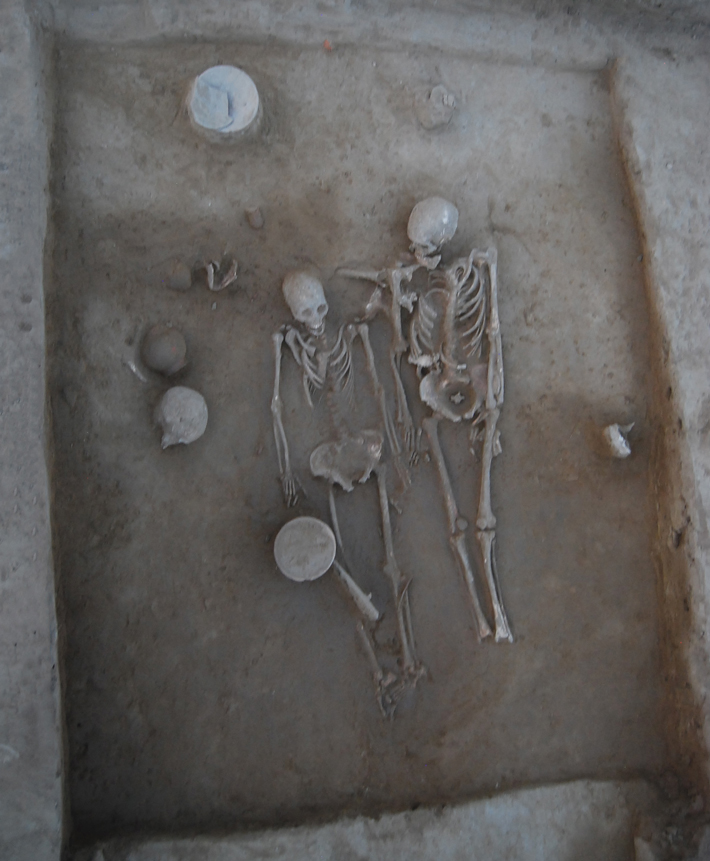 At a 4,500-year-old necropolis in northern India, archaeologists discovered a grave containing the remains of a man and a woman who seem to have been buried at the same time. The burial is one of some 60 graves that have been recently unearthed near a settlement known today as Rakhigarhi. Rakhigarhi was one of the largest cities of the Indus Valley, or Harappan, civilization, which flourished from 2600 to 1900 B.C. in what is now Pakistan and northern India. The couple were interred in a pit along with ceramic vessels and an agate bead. “The skeletal remains of both individuals were well preserved,” says Deccan College archaeologist Vasant Shinde, who led the excavations. “The manner in which they were buried, with the male facing toward the female, could commemorate their lasting affection, even after death.” Analysis of the skeletons showed that the two were between 21 and 35 years old when they died. They are the only known Harappan couple to have been buried together in the same grave.
At a 4,500-year-old necropolis in northern India, archaeologists discovered a grave containing the remains of a man and a woman who seem to have been buried at the same time. The burial is one of some 60 graves that have been recently unearthed near a settlement known today as Rakhigarhi. Rakhigarhi was one of the largest cities of the Indus Valley, or Harappan, civilization, which flourished from 2600 to 1900 B.C. in what is now Pakistan and northern India. The couple were interred in a pit along with ceramic vessels and an agate bead. “The skeletal remains of both individuals were well preserved,” says Deccan College archaeologist Vasant Shinde, who led the excavations. “The manner in which they were buried, with the male facing toward the female, could commemorate their lasting affection, even after death.” Analysis of the skeletons showed that the two were between 21 and 35 years old when they died. They are the only known Harappan couple to have been buried together in the same grave.
Advertisement
Advertisement
IN THIS ISSUE
From the Trenches
You Say What You Eat
Off the Grid
Snake Snack
A Funeral Fit for Etruscans
History in the DNA
A Plot of Their Own
Picnic for the Afterlife
A Big Production
Putting Dinner on the Table
Medieval Baby Bootie
Cotton Mill, Prison, Main Street
Animal Archaeology
The Unseen Mummy Chamber
Neanderthal Fashion Statement
Spring Boards
World Roundup
Crusader genetics, Neanderthal cannibalism, Terracotta Army weapons, and Connecticut’s oldest English town
Artifact
Bronze Age costume jewelry
Advertisement

Recent Issues
-
 May/June 2024
May/June 2024
-
 March/April 2024
March/April 2024
-
 January/February 2024
January/February 2024
-
 November/December 2023
November/December 2023
-
 September/October 2023
September/October 2023
-
 July/August 2023
July/August 2023
-
 May/June 2023
May/June 2023
-
 March/April 2023
March/April 2023
-
 January/February 2023
January/February 2023
-
 November/December 2022
November/December 2022
-
 September/October 2022
September/October 2022
-
 July/August 2022
July/August 2022
-
 May/June 2022
May/June 2022
-
 March/April 2022
March/April 2022
-
 January/February 2022
January/February 2022
-
 November/December 2021
November/December 2021
-
 September/October 2021
September/October 2021
-
 July/August 2021
July/August 2021
-
 May/June 2021
May/June 2021
-
 March/April 2021
March/April 2021
-
 January/February 2021
January/February 2021
-
 November/December 2020
November/December 2020
-
 September/October 2020
September/October 2020
-
 July/August 2020
July/August 2020
-
 May/June 2020
May/June 2020
-
 March/April 2020
March/April 2020
-
 January/February 2020
January/February 2020
-
 November/December 2019
November/December 2019
-
 September/October 2019
September/October 2019
-
 July/August 2019
July/August 2019
-
 May/June 2019
May/June 2019
-
 March/April 2019
March/April 2019
-
 January/February 2019
January/February 2019
-
 November/December 2018
November/December 2018
-
 September/October 2018
September/October 2018
-
 July/August 2018
July/August 2018
-
 May/June 2018
May/June 2018
-
 March/April 2018
March/April 2018
-
 January/February 2018
January/February 2018
-
 November/December 2017
November/December 2017
-
 September/October 2017
September/October 2017
-
 July/August 2017
July/August 2017
-
 May/June 2017
May/June 2017
-
 March/April 2017
March/April 2017
-
 January/February 2017
January/February 2017
-
 November/December 2016
November/December 2016
-
 September/October 2016
September/October 2016
-
 July/August 2016
July/August 2016
-
 May/June 2016
May/June 2016
-
 March/April 2016
March/April 2016
-
 January/February 2016
January/February 2016
-
 November/December 2015
November/December 2015
-
 September/October 2015
September/October 2015
-
 July/August 2015
July/August 2015
-
 May/June 2015
May/June 2015
-
 March/April 2015
March/April 2015
-
 January/February 2015
January/February 2015
-
 November/December 2014
November/December 2014
-
 September/October 2014
September/October 2014
-
 July/August 2014
July/August 2014
-
 May/June 2014
May/June 2014
-
 March/April 2014
March/April 2014
-
 January/February 2014
January/February 2014
-
 November/December 2013
November/December 2013
-
 September/October 2013
September/October 2013
-
 July/August 2013
July/August 2013
-
 May/June 2013
May/June 2013
-
 March/April 2013
March/April 2013
-
 January/February 2013
January/February 2013
-
 November/December 2012
November/December 2012
-
 September/October 2012
September/October 2012
-
 July/August 2012
July/August 2012
-
 May/June 2012
May/June 2012
-
 March/April 2012
March/April 2012
-
 January/February 2012
January/February 2012
-
 November/December 2011
November/December 2011
-
 September/October 2011
September/October 2011
-
 July/August 2011
July/August 2011
-
 May/June 2011
May/June 2011
-
 March/April 2011
March/April 2011
-
 January/February 2011
January/February 2011
Advertisement






